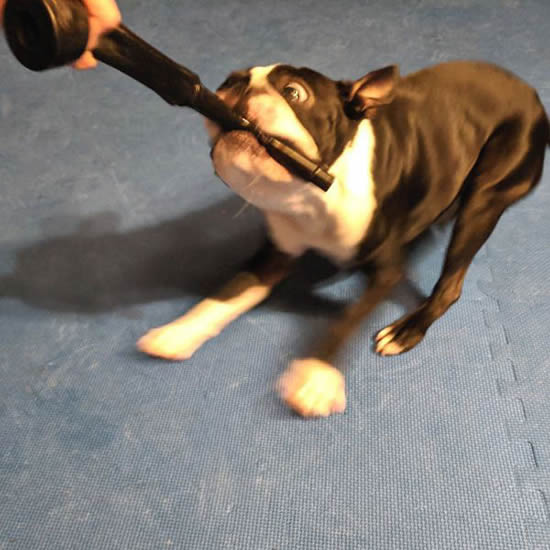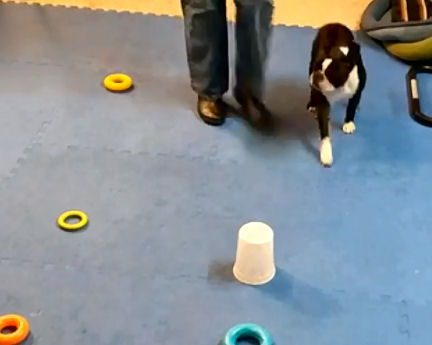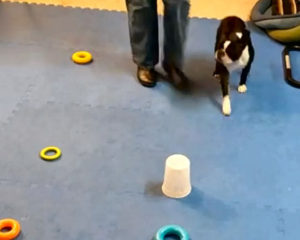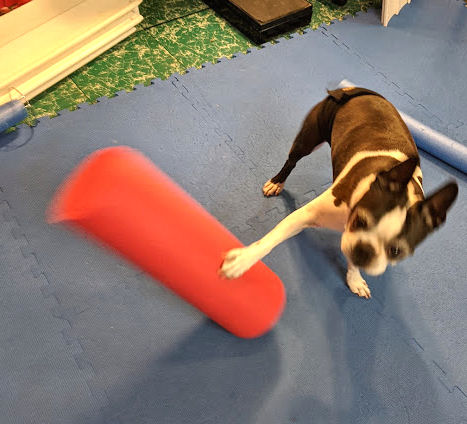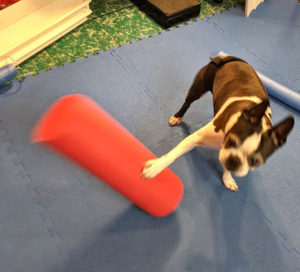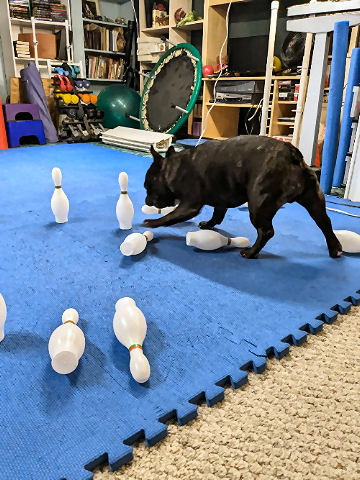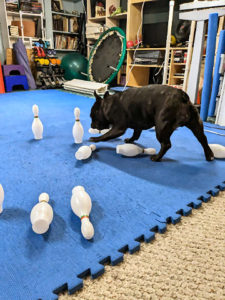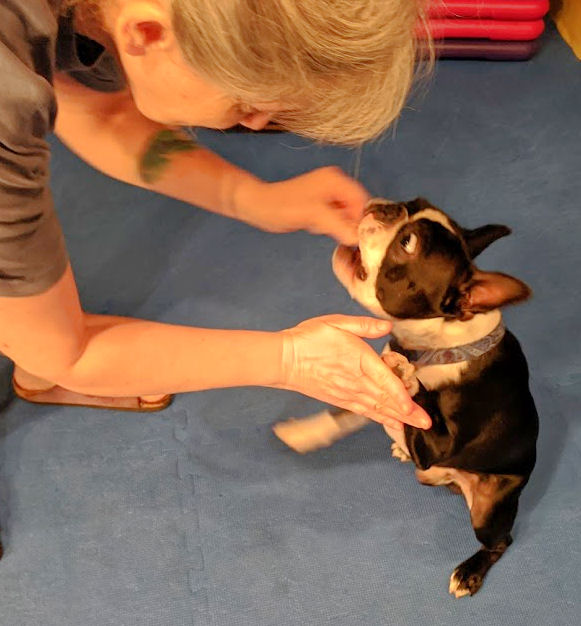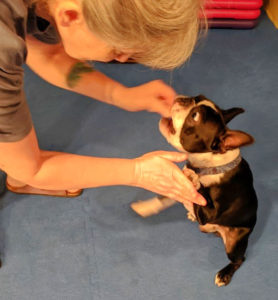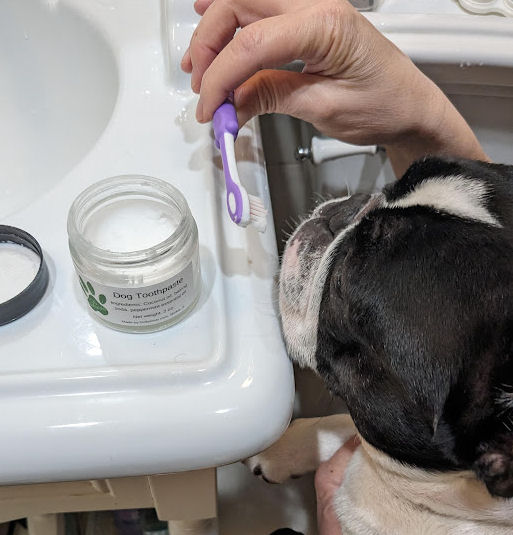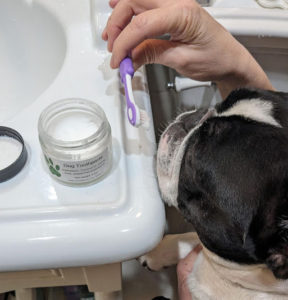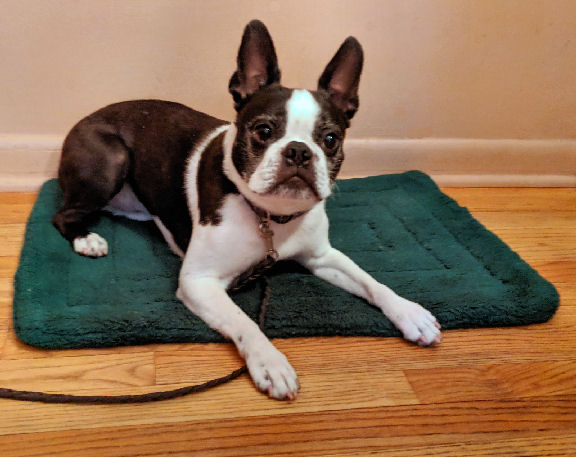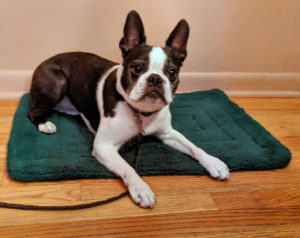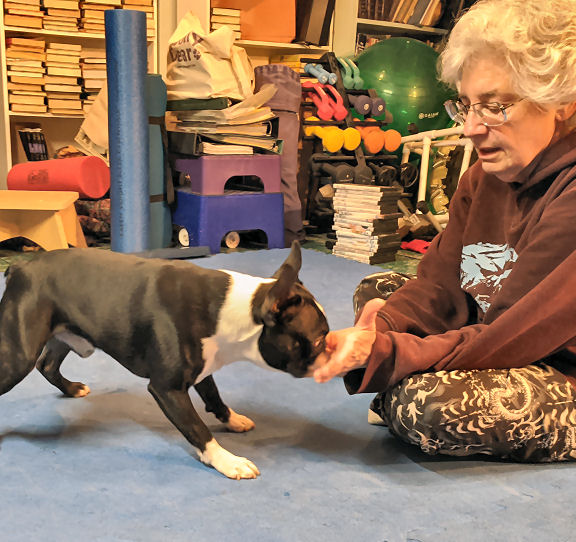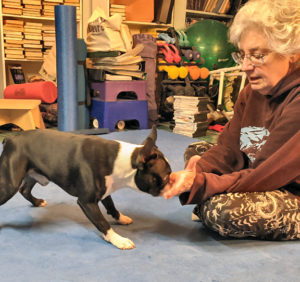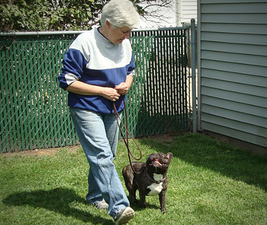Most first time puppy owners have identical wardrobe malfunctions.There are holes in the bottoms of their pants. Sometimes also in their legs. So your dog biting pants legs is a common malady.
So why do dogs, and especially puppies, grab onto your pants when you’re walking? And what can you do to make them stop?
The simple answer is that dogs are predators and designed to see and chase motion. Their vision may not be as acute or colorful as ours, but they’re aces at seeing movement.
Pouncing on prey
Dogs still have most, if not all, of the instincts of their wild canine ancestors. We’ve heard domestic dogs described as perpetual juveniles. They’re practicing their hunting behaviors; chasing, pouncing, and shaking.
Of course your dog or puppy has no intention to hurt you at all. That hole in your ankle where a tooth snagged was purely accidental. But it also means it’s a behavior you have to stop. It’s only cute the first time you imitate Frankenstein’s monster’s walk, dragging one foot with a puppy attached.
What to do about your ankle biter
Now that you know what’s going on, you need a plan to stop it. Since your dog is actually inviting you to play, the first option would be to have a tug toy you “trade” for your pants.
It may be a bit of a pain to have a toy stuffed in your pocket to whip out whenever your dog is “chasing” you, but it’s better than trying to mend another pair of pants.
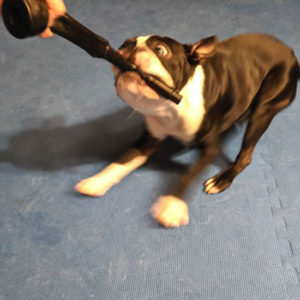
You don’t have to play for long, and it should be a tugging game. Remember to tug side-to-side, never up and down, to avoid damaging your dog’s neck.
In time, your dog will associate your movement with playing with a toy and will get one for the game. You can encourage this by naming the toy when you toss it and tell your dog to fetch it – “Get the tuggy!”
What if there’s no toy?
If you forgot to carry a toy, the way to stop the pants-biting is to stop all resistance to the tugging. This is the same technique you use to get your dog to drop something. If there’s no tension on the object (or pants), there’s nothing to tug.
Stop moving and pulling away from your dog. If you’re incredibly agile and your balance is amazing, you can move when your dog moves, hopping to keep tension off your pants leg. We don’t know anyone who could actually do this, but it paints a funny mental picture, doesn’t it?
Another way is to walk out of your pants and leave them with your dog. If you’re not in them, they’re not interesting.
Not cute anymore
Unfortunately, pants biting isn’t a puppy behavior that dogs grow out of. They have no reason to. They get your full attention, a fun game, and you used to laugh when they did it. So your dog biting pants is not something the dog is motivated to stop.
You can get them to stop, if you take away the fun of the game. Think about what your dog is getting out of it, and remove it from the equation. If there’s a particular place in your house where your dog does it, change the way you walk there. Walk backwards (facing your dog), or remove your pants before you go there. Or arm yourself with a tug toy to have a minute of fun with your dog.

